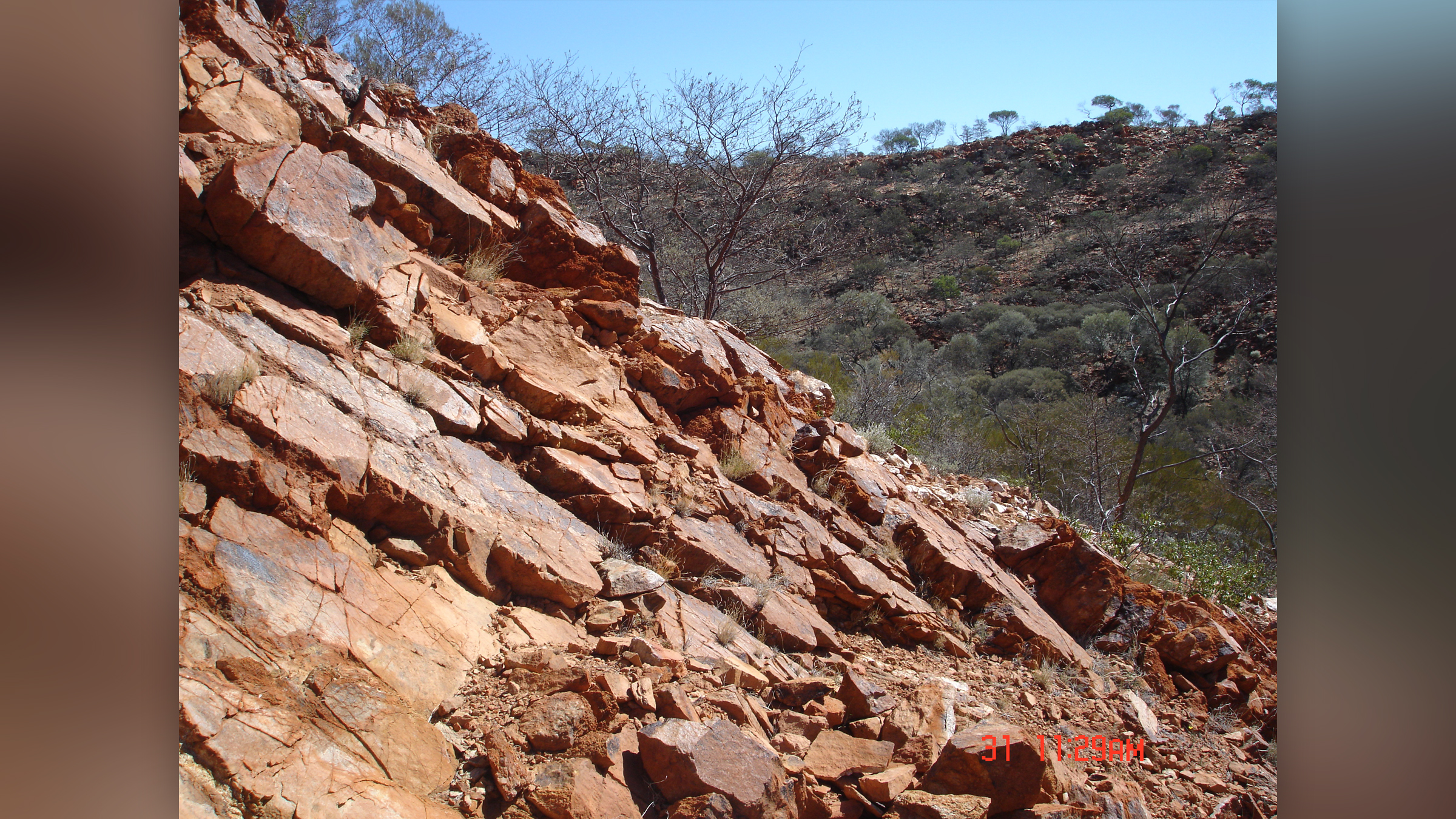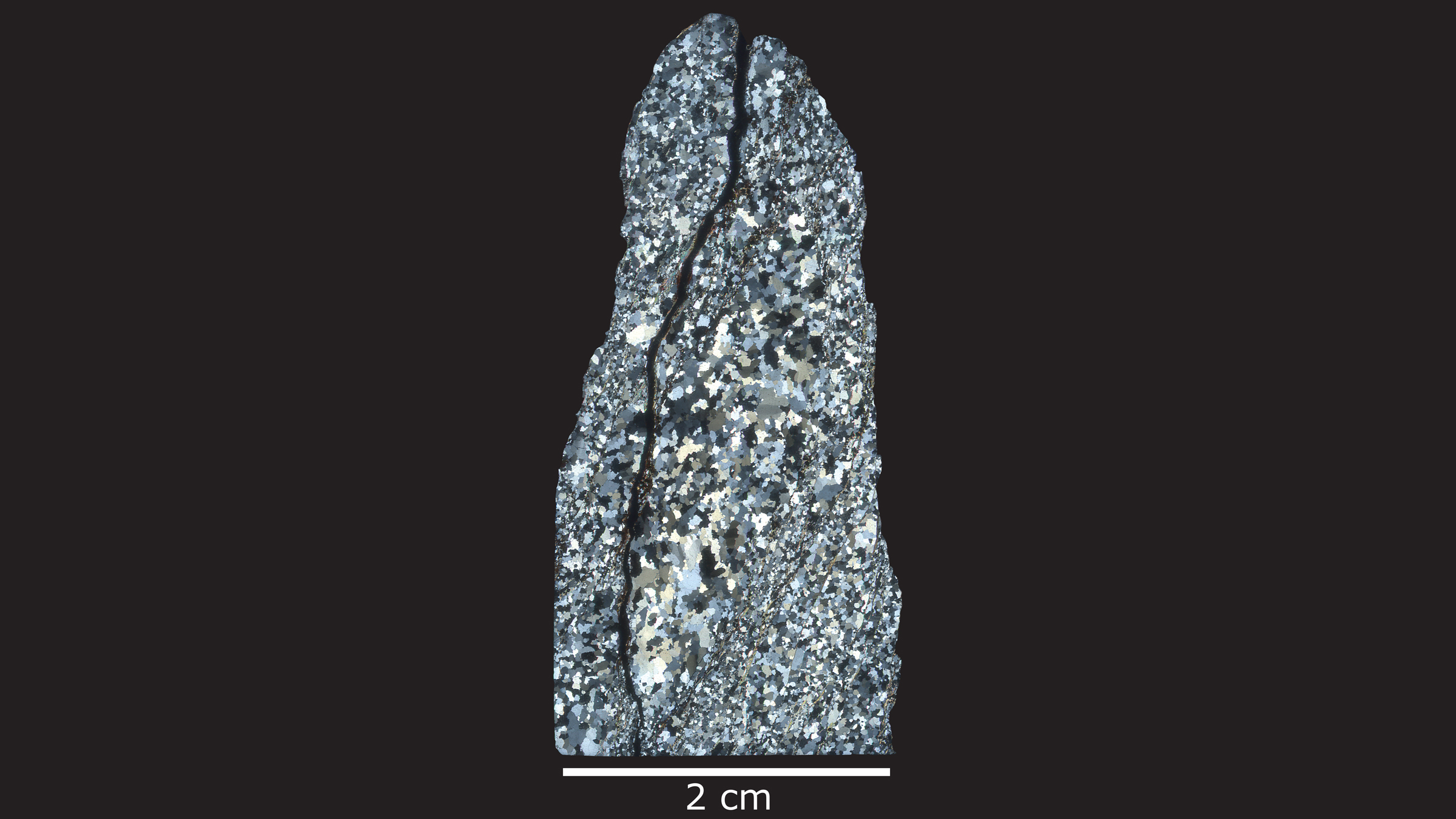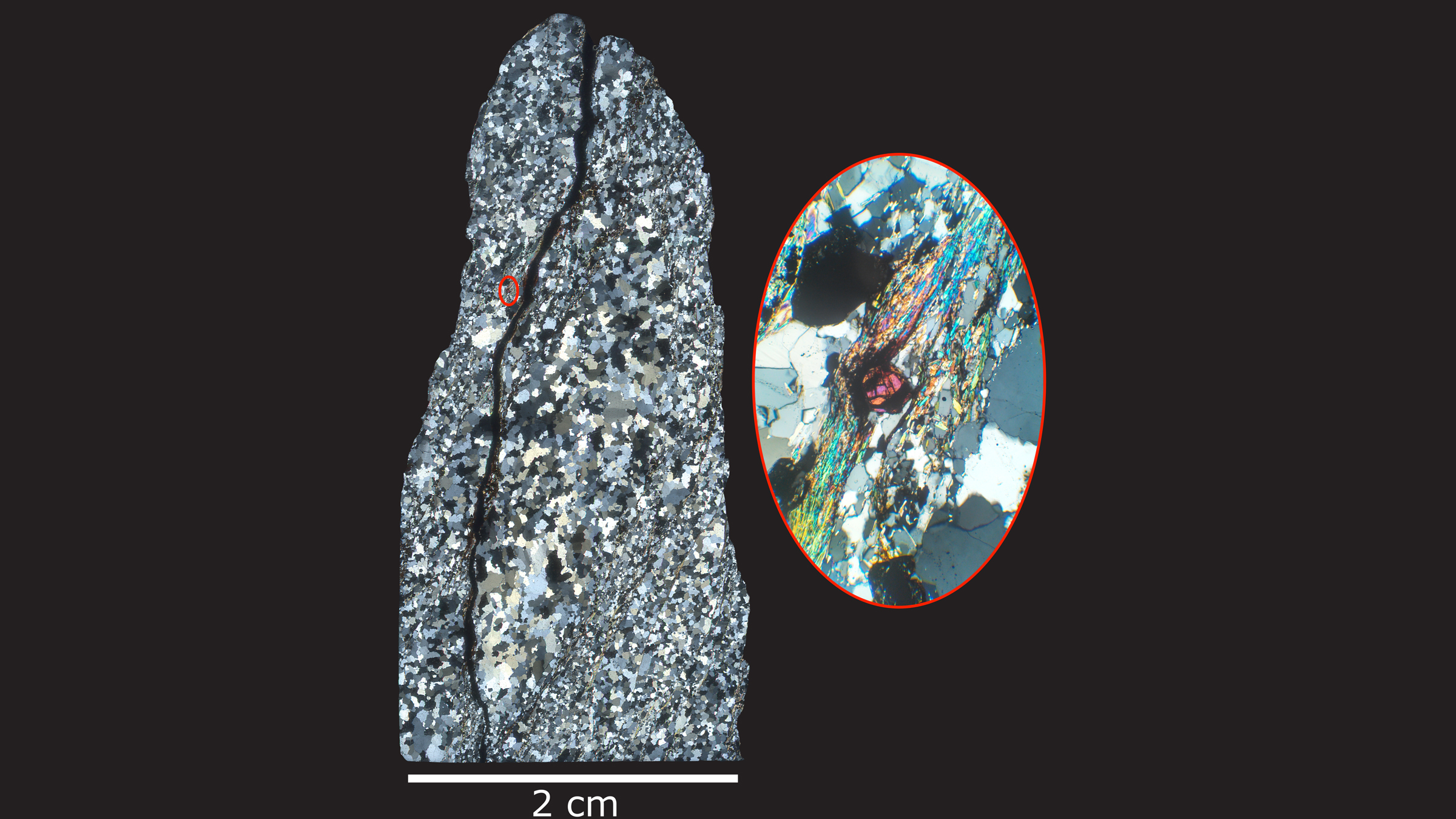Plate tectonics are 3.6 billion years old, oldest minerals on Earth reveal
Zircon crystals from Down Under revealed when the plates emerged.

Earth's tectonic plates have moved continuously since they emerged a whopping 3.6 billion years ago, according to a new study on some of the world's oldest crystals. Previously, researchers thought that these plates formed anywhere from 3.5 billion to 3 billion years ago, and yet-to-be published research even estimated that the plates are 3.7 billion years old.
The scientists on the new study discovered the onset date of plate tectonics by analyzing ancient zircon crystals from the Jack Hills in Western Australia. Some of the zircons date to 4.3 billion years ago, meaning they existed when Earth was a mere 200 million years old — a baby, geologically speaking. Researchers used these zircons, as well as younger ones dating to 3 billion years ago, to decipher the planet's ongoing chemical record.
"We are reconstructing how the Earth changed from a molten ball of rock and metal to what we have today," study lead researcher Michael Ackerson, a research geologist at the Smithsonian's National Museum of Natural History in Washington, D.C., said in a statement.
Related: In photos: Ocean hidden beneath Earth's surface
Plate tectonics refers to how humongous slabs of solid rock glide over Earth's mantle, the layer just below the crust. These continental slabs shift, fracture and collide, causing earthquakes to occur, mountains to grow and oceans to form. Besides Earth, no other known planetary bodies have plate tectonics, the researchers said. It's likely that Earth has life because of plate tectonics, Quanta magazine reported.
For instance, over time, rocks capture carbon dioxide, a greenhouse gas that helps to warm Earth (although too much CO2 can lead to global warming), and plate tectonics ensures that these rocks eventually get dragged down and melted, and their CO2 is spewed out as gas through volcanoes, Live Science previously reported. Without this process, Earth might freeze.
However, because the earliest plate tectonics have been covered up and recycled over the geological eons, determining its age can be challenging. To investigate, Ackerson and his colleagues collected 15 grapefruit-size rocks from the Jack Hills and pulverized them into their smallest mineral components, forming sand. Luckily, zircons are dense, so it was easy to separate them from the rest of the sand by using a method akin to gold panning, the researchers said.
Get the world’s most fascinating discoveries delivered straight to your inbox.


Next, the researchers took the zircons — more than 3,500 in all — and zapped them with a laser to measure their chemical makeup using mass spectrometry. The team also determined each zircon's age by measuring its uranium content, a radioactive element with a known rate of decay, which enables scientists to determine how long each sample has existed.
However, only 200 of these zircons were "fit" for study, meaning they had retained their chemical properties from billions of years ago.
"Unlocking the secrets held within these minerals is no easy task," Ackerson said. "We analyzed thousands of these crystals to come up with a handful of useful data points, but each sample has the potential to tell us something completely new and reshape how we understand the origins of our planet."


The team also looked at each zircon's aluminum content. Research on modern zircons has shown that high-aluminum zircons form in just a few ways. So, the presence of aluminum in ancient zircons offers clues about how they were produced and what was going on at that time, geologically speaking, the researchers said.
Related: In photos: The UK's geologic wonders
Eyes on aluminum
After analyzing the 200 zircons, each the width of just a few human hairs, the researchers found a marked increase in aluminum concentrations about 3.6 billion years ago.
This compositional shift probably marks the beginning of plate tectonics and "potentially could signal the emergence of life on Earth," Ackerson said. "But we will need to do a lot more research to determine this geologic shift's connections to the origins of life."
The team linked high-aluminum zircons with the onset of plate tectonics because one of the ways these unique zircons form is when rocks deep beneath Earth's surface melt. "It's really hard to get aluminum into zircons because of their chemical bonds," Ackerson said. "You need to have pretty extreme geologic conditions."

If rocks were melting deep beneath Earth's surface, then Earth's crust (the outermost layer of Earth) was likely getting thicker and beginning to cool, the researchers said. This thickening was likely part of the transition that led to the movement of the plates, the team said.
An earlier 2014 study on rocks from the 4 billion-year-old Acasta Gneiss Complex in northern Canada also indicates that Earth's crust was thickening around this time, which caused rock to melt deeper within the planet than they previously had.
"The results from the Acasta Gneiss give us more confidence in our interpretation of the Jack Hills zircons," Ackerson said. "Today, these locations are separated by thousands of miles, but they're telling us a pretty consistent story, which is that around 3.6 billion years ago something globally significant was happening."
Next, Ackerson plans to look for traces of ancient life in the Jack Hills zircons. He also plans to hunt for other extremely old zircons to see whether they give similar results about Earth's crust thickening around 3.6 billion years ago, he said.
The study, which was paid for by the Smithsonian and NASA, was published May 14 in the journal Geochemical Perspective Letters.
Originally published on Live Science.

Laura is the managing editor at Live Science. She also runs the archaeology section and the Life's Little Mysteries series. Her work has appeared in The New York Times, Scholastic, Popular Science and Spectrum, a site on autism research. She has won multiple awards from the Society of Professional Journalists and the Washington Newspaper Publishers Association for her reporting at a weekly newspaper near Seattle. Laura holds a bachelor's degree in English literature and psychology from Washington University in St. Louis and a master's degree in science writing from NYU.


